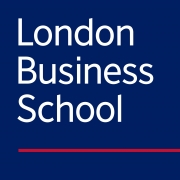Is there anyone out there?
/in Articles/by Adam KinglWhen Adam Kingl gets cornered at cocktail parties, there’s one question he is likely to be asked: what’s the best technology to use when running a virtual team?
Kingl, director of the emerging leaders programme at London Business School, is quick to put them right. It’s not the technology that matters — it’s the team.
“The foundation of any high-performing team is building trust, so leaders need to find out something about each member of the team as individuals,” he said.
“The fact that it is a virtual team does not mean you abandon that need to get to know people on a personal level. One of the problems with the virtual environment is you lose a certain degree of context because you miss out…
How a Unique Culture Proposition Became a USP
/in Articles/by Adam KinglHow a unique culture proposition became a usp
How can you transform the way you do things into a compelling sales proposition? Zurich Insurance has created a Unique Culture …
ADAM KINGL
01 MARCH 2010
How can you transform the way you do things into a compelling sales proposition? Zurich Insurance has created a Unique Culture Proposition which may well be its Unique Selling Point. Adam Kingl tells the story.
How a unique culture proposition became a uspEvery day dozens of Zurich Insurance risk engineers visit customer sites. This adds up to thousands of direct customer interactions and reams of risk insights fed back to the customers’ risk managers. In addition, Zurich’s global relationship leaders (GRLs) utilize their own meetings with corporate customers to make recommendations for risk management for the following year, always hungry to understand their customer’s risk exposures better than the customer. Examining these activities in 2007, a compelling message emerged: both customer and insurer benefit from a relationship based not on the transaction alone but on valuable knowledge-sharing. Here was an opportunity – to develop a genuine point of differentiation in the market by emphasizing risk insight – and a challenge – to change the culture of the organization so that time-pressured GRLs would incorporate even more of the contribution of the risk engineers in their conversations with risk managers. The potential benefits were clear: the ability to put a premium price on certain products and services, greater customer loyalty, cross-selling of products and services and an enhanced reputation for customer insight and innovation.
Unique Culture Proposition
In essence, Zurich was not envisioning a Unique Selling Point (USP) but a Unique Culture Proposition (UCP), or how the company culture – “the way things are done around here” – would stand out as a point of competitive differentiation. A UCP can be defined as a simple, direct message that governs all your people’s actions at all times and carves out your own space in the market for customers and/or talent.
To explore the implications of this definition, a UCP is what governs behaviour within an organization while a classic USP focuses on the nature of the product or service. Most of us are familiar with the 4 Ps of marketing (price, product, place, promotion) and how differentiating any one of these building blocks can carve out a USP. Like a USP and its 4 Ps, a UCP is built on a handful of building blocks: values, mindsets or assumptions, processes or systems, incentives and stories.
The UCP that Zurich pursued was clear. Aligning mindsets and behaviours around that goal was the challenge, and the anticipated result was serving customer needs not only better but uniquely.The means to that end was to make explicit the value of Zurich’s own people, particularly risk engineers, to the customer via the customer’s primary contacts, the GRLs. This initiative aimed to create real economic value for the company because its aim was for the GRLs and risk engineers to work differently together and to appear differently to their customers. That is a true UCP.
Storytelling change In spring 2007, the risk engineering team met with a senior group of GRLs to turn their vision of a UCP into reality. In their first design meeting, the team conceived a workshop that would be run in several key cities in Europe and North America for the local GRL communities.
One of the first points agreed by the group was that the workshop should prompt stories among the audience in order to lend credibility and to provide examples of how the suggested way of working has succeeded in the past. There were also many more general reasons why storytelling would be a powerful tool: stories are easy to remember by everyone in a community; they create a shared context; they have emotional resonance; and they provide a touchstone for how things were, are, or should be.
The team concluded that a hypothetical customer story would be a valuable vehicle for delivering their story. But this would not be a case study in the classic sense, more of a Choose Your Own Adventure type of customer story that can encompass all variety of risk challenges. Each workshop group would be divided into smaller groups to solve the challenges important to them. In that manner, the workshop designers would also put a risk engineer with each group to collaborate. The emphasis in the workshop was on sharing new ways of working and starting to practise them in a safe environment; storytelling to suggest practical ways of working in closer collaboration with risk engineers; using an experiential, interactive approach; leaving the GRLs with tools to facilitate this new way of working and a forum to share success stories and suggestions; and overall the onus was on the delegates themselves coming up with ideas and solutions rather than being taught.
Web Design & Hosting by Waterfront Digital



